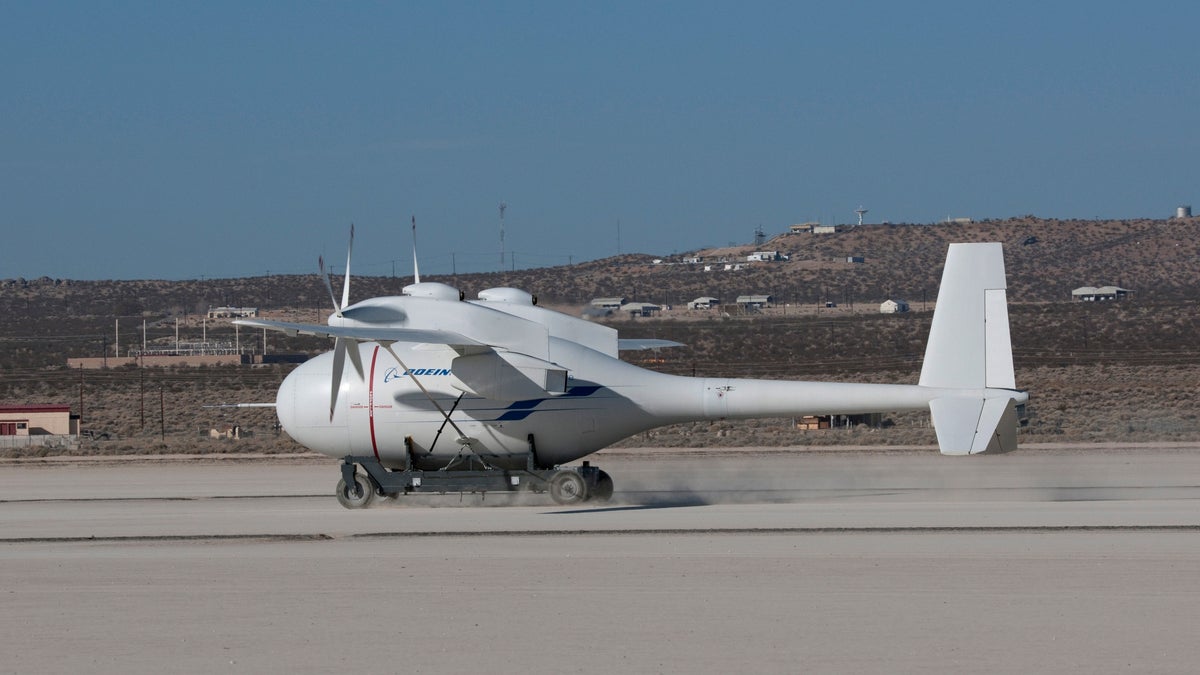Boeing's Phantom Eye goes for a low ride
The unmanned aircraft, burning liquid hydrogen as a fuel, aces a taxi test as Boeing eyes high-flying future missions.

Someday the Phantom Eye will soar at 65,000 feet. For now, Boeing's excited just to see it go four-wheeling on the desert floor.
The hydrogen-powered unmanned aircraft earlier this month took a modest, ground-level spin at Edwards Air Force Base in its first medium-speed taxi test, Boeing said today. Nestled on its launch cart system, the Phantom Eye traveled some 4,000 feet at speeds of up to 30 knots in a trip that lasted less than two minutes. (In the air, it's expected to have a maximum speed of 200 knots.)
Additional taxi tests are yet to come, including a high-speed test at 40 knots that will mark the culmination of testing before the UAV's first flight--for which no prospective date was given. When Boeing unveiled the Phantom Eye in July 2010, the goal was to have a first flight take place in early 2011.
But launch dates for futuristic gear are the kind of thing that routinely slip further into the future. For the present moment, Boeing put its emphasis on what it's got in hand and on the more immediate next steps.
"It's huge to capture the data that we did today," said Drew Mallow, Phantom Eye program manager, in Boeing's video of the March 10 taxi test (see below), "to allow the team to evaluate it so we can fine-tune the models, understand if the software is correct and understand how the propulsion system is going to react as it moves forward."
For the test, the Phantom Eye carried 1,900 pounds of liquid hydrogen in its two tanks. The aircraft is powered by 150-horsepower engines with propellers measuring 16 feet in diameter. The wingspan is a considerable 150 feet.
The brief taxi test is a far cry from the trips that the Phantom Eye will eventually take. Boeing says the high-altitude, long-endurance (HALE) unmanned aerial vehicle, packing a 450-pound payload, is meant to stay aloft for four days on "persistent" intelligence, surveillance, reconnaissance, and communications missions.
Update March 14 at 7:41 a.m. PT: The Phantom Eye has a centerline skid plus a nose wheel that come down for landing.

